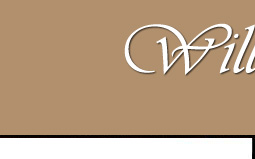

|
|
|
The Willow Grove Cemetery The original shape and boundaries of the Willow Grove Cemetery varied somewhat from what they are today. The Cemetery once had underground holding vaults located in the southwest portion of the property adjacent to Welton Street. The vaults were used as a temporary holding area for deaths which occurred in the winter months. An article in the Daily Home News from August 2, 1929 reports that the Cemetery Association was planning on selling the section adjacent to Welton Street to Commerical developers. The article explains the rational for the sale. "It was . . . decided to dispose of the property, which is on the other side of the brook and not fit for cemetery purposes, due to the ground being too low". Individuals interred in the vaults were then buried in the cemetery. The land was sold to George R. Morrison on September 13, 1929 for a total of one hundred dollars. One of the most unusual and noteworthy plots in the Willow Grove Cemetery is the Japanese Section. Purchased in 1870 by Rutgers College as a burial plot for the Japanese exchange student Kusakabe Taro, this plot became the final resting place for eight citizens of Japan who were studying or working in the Tri-State area. The seven marble obelisks are notable for the Japanese characters found an all four sides of the obelisks. These grave markers were in terrible disrepair until 1977 when Dr. Yuko Ohtake donated two thousand dollars for the restoration of the plot during his visit from Fukui, Japan. In 1992, the headstone of an infant buried in the plot was replaced and a general monument was erected to the memory of the eight. Every year, New Brunswick hosts a ceremony at this plot in remembrance of the deceased students as part of its involvement with its Sister Cities in Japan. Another plot of note is that of the New Brunswick Unknown Soldier from WWI. This soldier never saw combat and died during the flu epidemic of 1918 while stationed at Fort Dix. His remains were returned to New Brunswick but his family never came to claim his body so he was placed in a vault. James Neilson and the local VFW heard about the unclaimed and now unidentifiable soldier and buried him in the Willow Grove Cemetery. The burial took place in the summer of 1930 with full military honors. The VFW still places American Flags around the plot. Other individuals of note buried in Willow
Grove Cemetery are Ira C. Voorhees, from whom most of the land was
purchased; Johnson Letson, president of the New Brunswick Rubber
Company and a Rutgers College Trustee; J.C. Ackerman, local prominent
business man; as well as Tunis V.D. Hoagland, Mayor of New Brunswick
in the mid-1860's. The Cemetery is as well as many civil war veterans
and other local people of note. Jeptha Cheesman is the most notable individual buried in this section of the site. He is described as "a local mason, leader, and landowner." Mr. Cheesman spelled his name without an "e" after the "s" in his name; conversely, his name on the family obelisk is spelled "Cheeseman" The Presbyterian Cemetery The Baptist Church used the position of the tract that is adjacent to George Street (on which a Victorian home and part of the Hope VI project is now located) as its burial ground. It sold this land to Simon Van Wickk on April 3, 1878 for one hundred and fifty dollars. The land was later developed for commercial use. The Presbyterian Church chose to move the
tombstones and remains from the old Presbyterian Yard on Burnet
Street to the new cemetery on Morris Street in the fall of 1846
. These stones, dating as far back as 1746, are located in the southeast
portion of the Presbyterian year in the swale area. The grave markers
in this area are remarkable not only for their age, but also for
the stone out of which they are made. Two are made from a slate
not native to New Jersey and are thought to have been mined and
possibly carved in New England. Another is notable because it is
an early example of the use of marble for grave markers.
|
